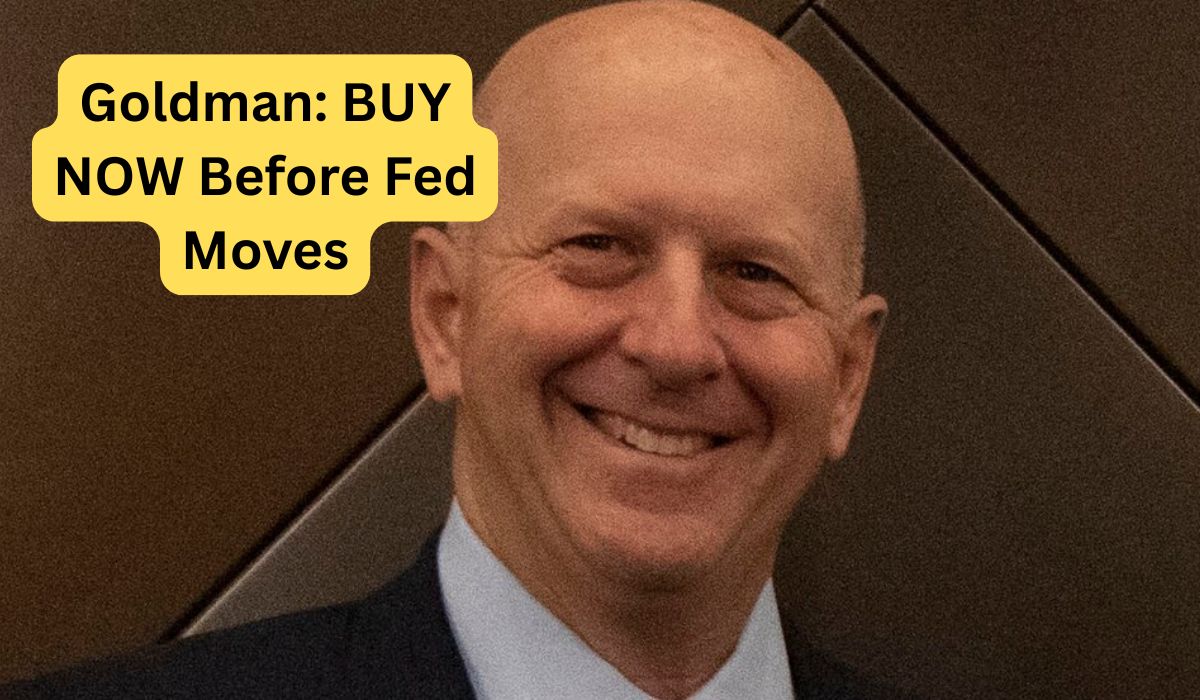Goldman Sachs has issued a notable recommendation advising investors to start buying the dip in US equity markets. With stocks trading off their recent highs and multiple economic crosscurrents at play, this call from one of Wall Street’s most influential firms raises a critical question: Is now the time to add risk, or are investors right to remain cautious?
The Bull Case: Why Goldman Sees Opportunity
The fundamental backdrop supporting this buy-the-dip thesis centers on three key pillars. First, the Federal Reserve‘s policy trajectory remains accommodative, with potential interest rate cuts still on the table and rate hikes completely off the discussion agenda. This dovish stance provides crucial support for equity valuations.
Second, the labor market continues showing resilience with unemployment hovering around 4%. This level historically indicates a healthy economy with sufficient consumer spending power to drive corporate earnings growth.
Third, and perhaps most significant, is the massive fiscal stimulus flowing through the economy. The federal government is projected to run deficits between $1.8 trillion and $1.9 trillion over the coming years. This level of stimulus creates substantial liquidity that historically finds its way into risk assets, providing sustained support for equity markets.
Market Behavior Reveals Cautious Sentiment
What’s particularly interesting about the current environment is how investors are actually responding to this dip-buying opportunity. Rather than aggressively deploying capital, market participants are nibbling around the edges. This tentative approach suggests lingering uncertainty despite the supportive macro backdrop.
The pattern emerging from recent trading sessions shows investors waiting for Federal Reserve intervention. Friday’s market rally demonstrated this dynamic clearly. When volatility intensifies and markets decline sharply, expectations build that the Fed will adopt a more dovish stance, triggering relief rallies.
Beyond monetary policy, fiscal stimulus measures are also influencing market sentiment. Recent policy adjustments, including easing tariffs on beef and coffee alongside discussions of $2,000 stimulus payments, signal government willingness to support economic activity. This creates an environment where significant market declines may prompt additional policy responses.
Consumer Stocks Show Signs of Stabilization
Friday’s trading session provided interesting evidence of this stabilization dynamic across beaten-down consumer names. Chipotle posted gains despite broader concerns about consumer spending. Macy’s rallied, and even Dave & Busters, which has struggled significantly this year, managed to climb.
This movement in consumer discretionary stocks reflects expectations that both the Federal Reserve and government will take action to stimulate economic activity before any serious downturn takes hold.
The Consumer Spending Puzzle
The consumer remains the critical variable in this investment thesis. Recent earnings reports have delivered decidedly mixed signals about household spending patterns.
Gap and TJ Maxx reported solid results, suggesting value-conscious shoppers are finding ways to maintain spending. However, Home Depot‘s disappointing numbers raised concerns about big-ticket purchases, while Lowe’s delivered middling results.
This week brings additional data points with Best Buy, Kohl’s, Abercrombie & Fitch, and Dick’s Sporting Goods all reporting earnings. These results will provide crucial insight into consumer behavior heading into the critical holiday shopping season.
The National Retail Federation projects this will be the first holiday season where consumer spending exceeds $1 trillion. That’s a significant milestone indicating continued spending momentum.
However, the composition of that spending reveals important nuances. The high-income consumer continues driving economic growth, while lower-income households face persistent pressure. Walmart‘s recent commentary highlighted this bifurcation, noting growth across all income cohorts but specifically calling out challenges for lower-income shoppers.
This income-based divergence matters for investors trying to position portfolios. Companies serving affluent consumers may continue thriving, while those dependent on lower-income spending could face headwinds even in a generally supportive market environment.
The AI Investment Narrative Remains Critical
One factor that could significantly undermine the bull case is any weakening in the artificial intelligence capital expenditure story. If investors lose confidence in sustained AI spending growth, markets could easily face 10% or greater declines.
Nvidia‘s recent earnings provided reassurance on this front. Despite the stock’s reversal following results, the underlying demand picture remained strong. Real customer adoption continues accelerating, backlogs persist, and technology spending shows no signs of meaningful deceleration.
Looking at the longer-term trajectory, technology adoption consistently expands regardless of short-term economic fluctuations. AI represents a fundamental shift in how businesses operate and consumers interact with technology. This secular growth trend should support continued investment even during periods of economic uncertainty.
Dell reports earnings this week, providing another data point on enterprise technology spending. However, Dell functions less as a market barometer compared to Nvidia. While Dell’s results matter for understanding AI infrastructure buildout, they won’t carry the same market-moving weight as Nvidia’s numbers.
What Really Matters From Here
The most significant driver for markets in the near term centers on Federal Reserve communications regarding interest rate policy. Any indication of cuts or accommodative language will likely trigger positive market reactions. The discount rate applied to future earnings remains the critical variable for equity valuations.
Interestingly, the Fed’s current focus may extend beyond traditional concerns about stock market levels or employment data. Emerging cracks in private credit markets could become the next pressure point demanding policy attention. These stress points in less-regulated lending markets sometimes provide early warning signals of broader financial instability.
The Strategic Question for Investors
Goldman Sachs is essentially arguing that the combination of accommodative monetary policy, massive fiscal stimulus, resilient labor markets, and continued technology investment creates an environment where significant market pullbacks represent buying opportunities rather than the start of a major downturn.
The cautious investor behavior we’re currently observing suggests many market participants aren’t yet convinced. They’re waiting for clearer signals before deploying capital aggressively.
What to watch in the coming weeks: Federal Reserve commentary on rate policy, consumer spending data from key retailers, and any signs of stress in credit markets that might prompt policy responses. These factors will determine whether Goldman’s buy-the-dip call proves prescient or premature.
